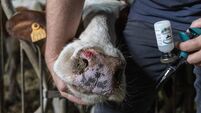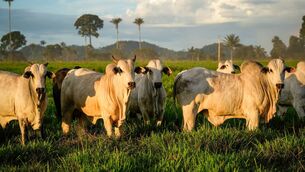A hard case of mastitis to fight

Recently I was given a bulk milk sample from Paddy to send off to the laboratory for analysis.
He had been having a few niggling little problems, rumbling on for a period of time, and it was getting to him. We had a result from the laboratory the following morning which is what you want.
The technician rang me about the sample submitted.
There was such growth on the plate that he felt to give me any result would be valueless. There was anything up to twelve bacterial species and some of those present indicated that the sample was unreliable.
He explained his dislike of bulk tank samples because they can often include residual bacteria from the milk lines and are not a true reflection of what is going on at cow level.
Further sampling revealed a predominance of the Streptococcus uberis bacteria. This started to make sense in Paddy’s case. Strep.
Uberis is a conglomeration of different strains, some of them more active than others.
This bacterium is found to live on the skin of cows in many different sites from the udder to the groin, axilla (armpits) and mouth.
For years it was classified as being an environmental source.
The bedding that the animal lay down on thus became an important reservoir for infection and it is for this reason that we focus our attention on the cleanliness of the bedding when we come across cases of Strep uberis mastitis.
It has been said that cows lie in the same place at night when they are out at night, and that the ground where they lie can become a source of infection, but in this country, with our rotation system of grazing, we do not see this as a problem since the cows will not be back in the same paddock for three weeks.
Maybe this year, where there was a tendency for farmers to let the cows out into one paddock and feed them silage so as to conserve the rest of the paddocks, we will see more of this type of mastitis.
With the environmental type of mastitis, the cow picks up the mastitis from the environment. If the teats come into contact with infected bedding etc, then there is every chance that she will develop mastitis.
The onset is usually sudden and we see a hard swollen quarter with large clots in the milk in a cow that is running a very high temperature. In recent times it has been found that Strep Uberis can also live quite happily inside the udder and can even make its way up into the lymph nodes.
It has the ability to protect itself against the defence mechanisms of the body and also wall itself off against the attack from antibiotics.
Because if this it is very hard to treat cases of this type of mastitis successfully.
We might get an apparent cure only for the cow to get a reoccurrence on a number of occasions leading to the chronic cow.
These cows can often be a major reservoir for infection and culling them could be one of the control features in a mastitis plan.
Since the source of the infection here is from inside the cow’s udder we call this a contagious type of mastitis.
It can be spread from one cow to the other at milking time if the routine is not perfect.
Because the source of infection can be both environmental and contagious it is important to carry out both pre-dipping and post dipping when milking the cows. Don’t put your head in the sand when you have repeat cases of mastitis.
Seek out the help of your local vet and let him/her sort out your problem.













